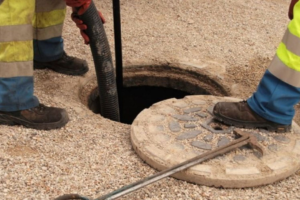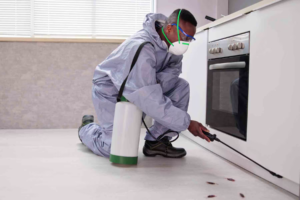A fence can increase a property’s value, provide privacy, improve security, reduce noise, and mark boundaries. However, homeowners should carefully consider their goals when choosing a fence style.
Fences act as middlemen between thieves and buyers who may not realise they’re buying stolen goods. They often pay thieves a price based on norms and legitimate market rates. Contact R.C Fence LLC now!

There’s a reason the old saying goes “good fences make good neighbors.” A well-chosen and well-maintained fence is more than just a way to establish boundaries for property lines, it can elevate the aesthetics of your home. From the classic warmth of wood to the contemporary allure of metal, fences offer a wide variety of design options that can transform your outdoor space into a truly distinctive area that reflects your personal style.
When it comes to aesthetics, wood fences offer a natural appeal that is difficult to match. Woods like cedar and redwood have an organic aesthetic that blends seamlessly into the surrounding environment, while also providing inherent resistance to weather damage. Wood fences require regular staining or painting to maintain their beauty, but with the right care, they can last for decades. Alternatively, vinyl fencing offers a virtually maintenance-free option that is resistant to rot and pests, while still offering an appealing look.
Metal fences have also become a popular choice for their contemporary allure. The streamlined appearance of fences made from materials like aluminum or wrought iron complements modern architecture and provides a sophisticated aesthetic. When paired with corrugated metal sheets from Barrier Boss, they can even offer a more industrial-inspired aesthetic.
For homeowners with a more eclectic sense of style, combining different materials in fence design opens up an endless array of visual possibilities. For example, a wood fence interspersed with corrugated metal sections from Barrier Boss offers a unique look that can be tailored to suit individual aesthetic preferences.
Privacy
Often, privacy is a top reason homeowners choose to install fences. If you live in a busy neighborhood or have nosy neighbors, a fence is the best way to enjoy your yard without feeling watched or bothered. You can relax, entertain guests, and spend time with your family without the worry of prying eyes.
Aside from creating a private space for relaxing and entertaining, a fence can offer other benefits that make it a worthwhile addition to your home. For example, many fence types offer shade from the sun. This can help your plants that don’t thrive in direct sunlight and protect your children and pets from the harmful rays of the sun.
Another benefit of fencing that isn’t always considered is its ability to help clearly identify property lines. If your neighbor’s lawn border keeps getting closer and closer to your house or they keep putting their trash out on your curb, these little things can add up to significant property encroachment over time. A privacy fence can stop these problems before they get out of hand and make it clear where your neighbors’ property ends and yours begins.
If you plan on selling your home in the future, a privacy fence can boost its resale value. As a matter of fact, a study conducted by the National Association of Realtors found that homes with fenced-in yards sold for up to 6% more than those without a fence. This can easily offset the cost of your new fence. Plus, buyers will be happy to see that your yard has a pre-installed fence and won’t need to deal with the hassle of erecting one themselves.
Security
A fence can provide a physical barrier that helps prevent property and violent crime. These fences are available in a variety of styles and heights and can be customized to suit specific security needs. They can also be paired with other security systems such as CCTV surveillance and access control systems. Security fencing can also improve operational efficiency by limiting the number of people who can access your facilities.
Many security fences are designed with a clear zone that provides an unobstructed view to enhance intrusion detection. This feature can be combined with security lighting to deter unauthorized entry and increase visibility for law enforcement. The clear zone also allows for better detection of any intruders, which may be armed or carrying weapons. The use of shear nut or breakaway bolts can make it more difficult to remove the hardware from the fence, while a countersunk hex head will ensure that a tool can’t be used to grip and pull the bolt. An adhesive like Loctite can be applied to the hex head of bolts or nuts to further strengthen them.
Fencing can be a powerful deterrent against crime, but it is not a foolproof measure. Criminals who are determined to enter a facility will often find ways around or through the fence. As a result, it is important to plan your security strategy based on the five D’s: deter, detect, delay, deny, and defend.
Fencing can also serve a number of other purposes, including acting as a visual deterrent for criminal activity, allowing law enforcement to identify and track suspects, and providing a sense of safety and security. It can also be used to protect landscaping, loading docks, and outdoor equipment from trespassers or thieves.
Durability
The durability of a fence is one of the most important factors homeowners must consider when selecting the ideal fence for their residential property. Durability refers to the ability of a fence to withstand external forces such as wind, rain, and temperature variations. There are many things that influence the durability of a fence, including its material type, climate conditions, and maintenance practices.
Wooden fences, for example, can be extremely durable when the material is treated or if it is made from a hardy species like cedar. Cedarwood, for instance, has natural oils that repel insects and enables it to withstand rot. It is also highly resistant to moisture and therefore able to maintain its structural integrity. If it is properly maintained, a cedar fence can last up to 40 years.
Other types of wood fences, such as spruce and pine, can also be very durable if they are chemically treated or if the posts are made from concrete-filled post holes. However, these types of wooden fences are susceptible to moisture and can lose their durability over time. Moisture is the biggest enemy of a wood fence, so it is essential to keep up with maintenance and staining to prevent damage and prolong its longevity.
Metal fences, on the other hand, are very resilient and can last for decades with little maintenance. This is particularly true if they are made from a material that is naturally resistant to moisture, such as aluminum or steel. While these types of metal fences are often more expensive upfront, they do not require regular staining or painting and can resist rust and corrosion in moist climates. As a result, they can save homeowners money in the long run.
Maintenance
Many different types of fences are available, each made for specific purposes. However, all fences require a certain amount of maintenance in order to remain attractive and functional for the lifespan of the property. Regular inspections and routine cleaning can keep your fence strong enough to withstand the next rainstorm or windstorm, and avoid costly repair bills.
A physical and visual inspection of the fence allows you to spot areas that need immediate attention, such as loose boards or pickets. Performing these repairs promptly can prevent further damage and ensure the safety of your family, pets, and livestock. Loose pickets are easy to fix by simply hammering them back into place, and loose screws or nails can be tightened to improve the strength of your fence.
Wood fences should be regularly cleaned to remove dirt buildup, pool chemicals residue, mildew and mold, or stains from tree debris. You should also apply a protective stain or paint to protect your wood fence from moisture and UV rays. Make sure that the surface is clean before applying any stain or paint, and use a pressure washer to blast away grime to allow for even application.
Metal fences can be subject to corrosion from the elements, so you should inspect and re-coat with a protective coating on a routine basis. Rust can be removed with a wire brush or sandpaper, and then re-coated with a rust-inhibiting paint or protective coat. Regularly cleaning your metal fence will help to prolong its life.

